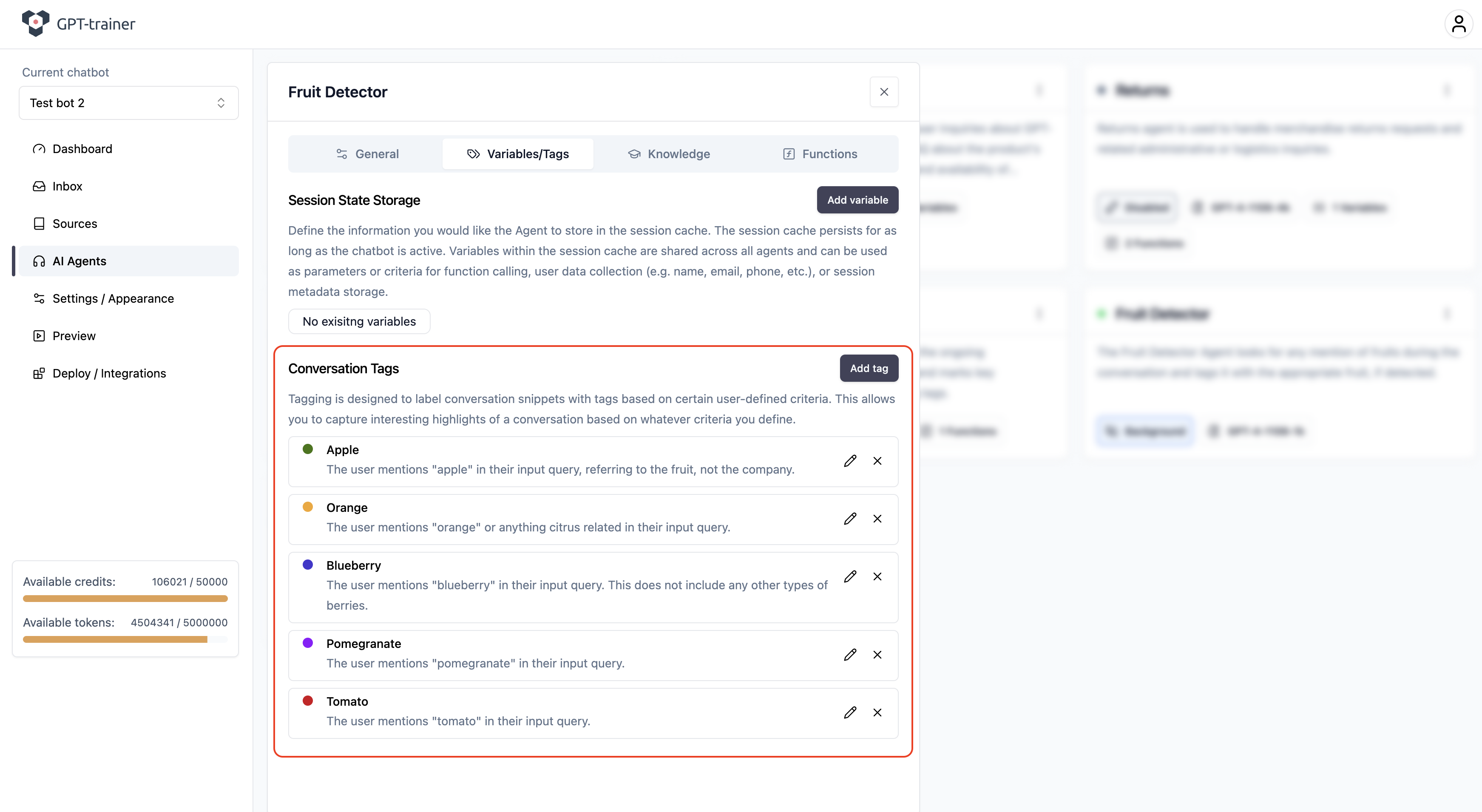GPT-trainer has 2 types of Agents:
-
User-facing: Agent directly interacts with users conversationally in a Q&A fashion.
Only a single user-facing Agent engages with the user when a new query is input into the chatbot.
-
Background: Agent never interacts with users directly and instead monitors the conversation
in an ongoing fashion. All background Agents are run whenever the user submits a new query to the chatbot.
Unlike user-facing Agents, background Agents are designed to monitor conversations and provide
assistance in the background by assigning tags or calling functions when certain criteria are met.
Agents are completely isolated from one another. This means that you cannot
direct the behavior, bias, or selection priority of one Agent from inside
another Agent.
Here’s a fun setup that detects any mention of various fruits during the conversation and assigns the appropriate tags.


